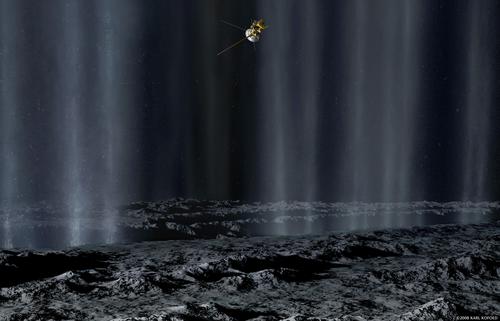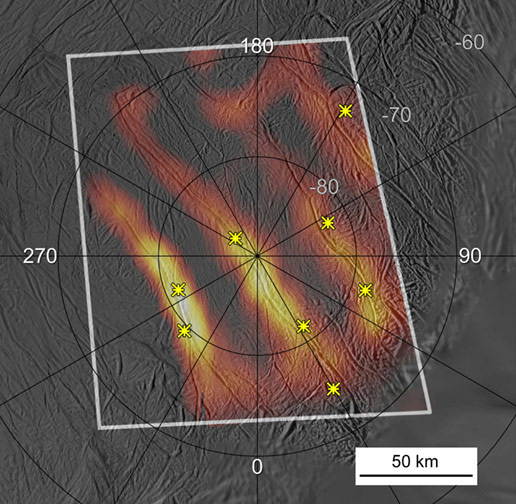This Week’s Finds in Mathematical Physics (Week 272)
Posted by John Baez
In week272 of This Week’s Finds, see what the Cassini probe saw as it shot through the icy geysers of Enceladus:

See what happens when the Io flux tube hits Jupiter. Learn two new properties of the number 6. And discover the wonders of standard Borel spaces, commutative von Neumann algebras, and Polish groups!
I often dislike artist’s visualizations of scenes from outer space. But this one I like. It’s Cassini whizzing through the Enceladus plumes, as drawn by Karl Kofoed.




Re: This Week’s Finds in Mathematical Physics (Week 272)
A small correction: not every metrizable space embeds in the Hilbert cube (the simplest counterexample being an uncountable discrete space). A topological space is separable and metrizable iff it embeds in the Hilbert cube.